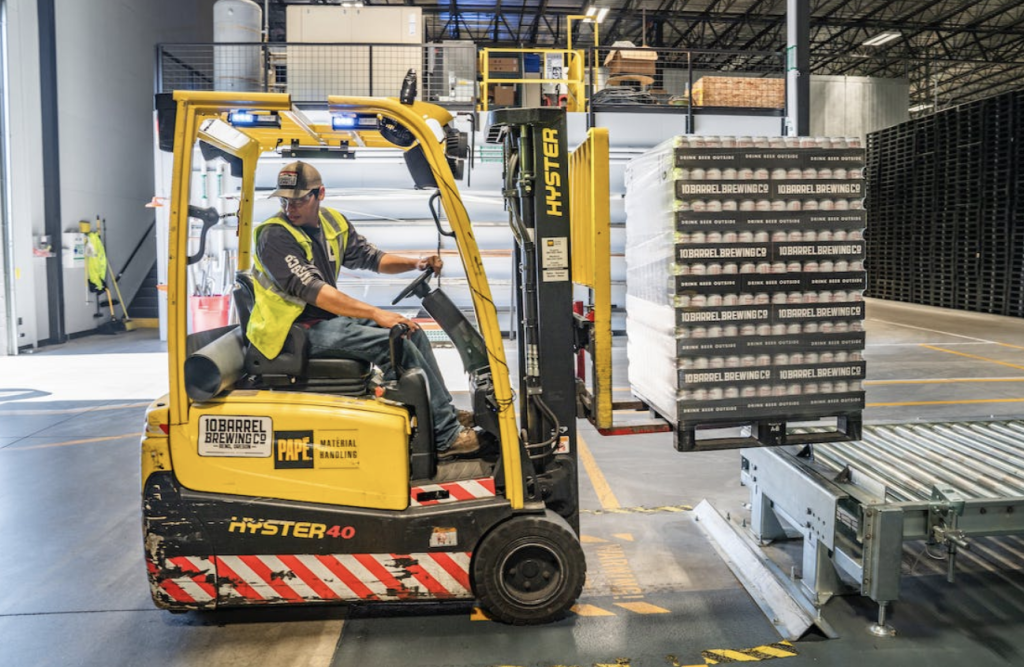For businesses, maintaining a lean supply chain is vital to success. A lean supply chain is a strategy to streamline the flow of goods and materials throughout the production process, from supplier to customer. As a result, businesses can save money and remain competitive by reducing waste and maximizing efficiency. Let’s explore the principles of lean supply chains further, and the benefits lean supply chains hold for business in more detail.

Via Pexels
What Are Lean Supply Chains?
Lean supply chains have become increasingly popular in recent years, offering many benefits to businesses that choose this approach. The core principle of leaning out a supply chain is to focus on waste reduction and efficiency. Any steps to minimize waste, including inventory, transportation costs, or time delays in production, are part of the lean methodology. This strategy helps reduce costs and improves customer service by optimizing resource utilization. Additionally, internal and external communication between suppliers, customers, and manufacturers is improved as teams work collaboratively with better visibility into supply chain activities. Lean supply chains are attractive because they allow businesses to remain agile while managing production fluctuations and embracing new technologies that drive innovation and competitiveness in the marketplace.
The Benefits Of Lean Supply Chains
- Increase Efficiency
A lean supply chain aims to reduce waste and optimize resource use. By streamlining the flow of goods and materials, businesses can save money by eliminating unnecessary steps in production. This helps reduce costs and time delays, enabling businesses to meet customer demands better, quickly, and efficiently.
- Reduce Inventory Costs
Lean supply chains are designed to reduce inventory costs and improve customer service by avoiding the need for overstocking. By focusing on just-in-time inventory (JIT) management, businesses can better control their stock levels and avoid costly product spoilage or overproduction.
- Boost Collaboration
Lean supply chains focus on collaboration and transparency, which can improve communication across internal departments and between suppliers and customers. This heightened team spirit helps to ensure that quality standards are met, customer orders are fulfilled on time, and production output is optimized.
- Improve Visibility
Lean supply chains provide businesses with better visibility into their operations, allowing them to respond quickly to production and customer demand changes. This helps reduce costs associated with unexpected delays or overproduction of products and keeps customers informed about delivery times and order status updates.
- Increase Agility
Lean supply chains are flexible and agile, allowing businesses to adapt quickly to changing production requirements or customer needs. This helps businesses remain competitive in the marketplace while reducing costs associated with expanding their operations or introducing new technologies.
How To Implement A Lean Supply Chain
- Identify Inefficiencies
The first step in implementing a lean supply chain is identifying any inefficiencies and improvement opportunities. This can be done by assessing current processes, analyzing customer demand, and evaluating supplier performance.
- Develop A Plan Of Action
Once the problem areas have been identified, businesses must develop a plan to improve their supply chain. This should include setting goals, mapping out the steps to reach them, and designating organizational roles to ensure they are achieved.
- Invest In Technology And Automation
Investing in technology and automation can help streamline processes, reduce costs, and improve customer service. This includes introducing new tools such as RFID tags, robotic pickers, or automated data entry systems to increase efficiency and accuracy. In addition, Telematics technology is an integral part of lean supply chain management, providing real-time data on the movement of goods and materials.
- Develop Strategies For Measurement And Review
To properly evaluate the effectiveness of a lean supply chain, businesses must develop strategies for tracking progress and performance. This includes measuring customer satisfaction, on-time delivery, and inventory turnover rates. Additionally, ongoing reviews should be carried out to identify areas of improvement and ensure that objectives are being met.
- Ensure Sustainability
The final step in implementing a lean supply chain is to ensure sustainability. This includes regularly assessing the system and making necessary adjustments while adhering to customer requirements and government regulations. By doing this, businesses can ensure their lean supply chain remains efficient and effective over time.

Via Pexels
Tips For A Smooth Transition To A Leaner Supply Chain
Moving to a leaner supply chain is not a decision to be taken lightly. However, a few tips may prove useful for any business looking to streamline its operations this way.
- Start Small
Rather than attempting to overhaul the entire supply chain at once, businesses should start small and gradually build up. This will help them stay focused on their objectives while allowing any problems or issues that arise to be quickly identified and resolved.
- Track Results
It is crucial to track the results of any changes made to the lean supply chain, as this will help businesses to identify areas of improvement and ensure their objectives are being met.
- Communicate With Suppliers
Communication between suppliers and customers is essential to any successful lean supply chain. This helps ensure that customer requirements are being met and that suppliers can provide the necessary materials or services.
- Monitor Costs
Businesses should ensure that they are monitoring costs associated with their lean supply chain. By doing this, they can ensure that any savings made through streamlining operations are not offset by increased expenses elsewhere in the business.
- Invest In Training
Businesses should also invest in training their employees to ensure they have the knowledge and skills to implement and manage a lean supply chain successfully.
The Influence Of Technology On A Leaner Supply Chain
Introducing technology into the supply chain has helped companies become leaner and more efficient. Technology is crucial for creating an optimally functioning supply chain by automating processes, streamlining communications, and improving data accuracy.
Technology can be used to reduce costs associated with inventory management and other operational activities in the supply chain. For example, automation helps to eliminate manual labor expenses while simultaneously reducing errors that would otherwise increase lead times or disrupt production flows. In addition, technologies such as artificial intelligence (AI) can be used to optimize purchase orders, delivery schedules, and other operations within the supply chain to ensure it runs as efficiently as possible.
Cloud computing also plays a role in enabling organizations to become leaner and more agile. By enabling applications to be accessed remotely, cloud computing helps organizations reduce the hardware they need to maintain on-premises while also giving them access to the necessary information they need to make informed decisions that can help streamline their operations.
Telematics
What Is Telematics? Everything Fleet Owners Need To Know:
One technology that has been gaining traction in recent years is telematics. Telematics refers to using telecommunications and other technologies (e.g., GPS) to monitor vehicles, drivers, and other assets associated with a fleet operation. The data collected by this technology can then be used to optimize fleet performance by improving safety, reducing costs, and boosting efficiency overall. Telematics also provides valuable insights into vehicle utilization which can help fleets become leaner. By monitoring mileage and fuel consumption, fleet owners can ensure that their vehicles are being used optimally, which helps reduce costs associated with over-utilization or under-utilization of assets.
In addition, telematics provides insight into driver behavior which can help further optimize performance and safety in the supply chain. For example, by tracking data such as acceleration patterns, braking patterns, speed, and cornering rates, it is possible to understand better how drivers are operating their vehicles and look for areas where improvements can be made to prevent accidents or improve efficiency overall.
Telematics also helps fleets maintain compliance with regulatory requirements by providing real-time alerts when there are potential violations or discrepancies. Through this data-driven approach, fleets can ensure that their operations are up-to-date with the latest standards and regulations.
Technology has played a key role in helping organizations create leaner supply chains. Technology is a crucial component of an effective supply chain management strategy by automating processes, improving data accuracy, and providing insights into vehicle utilization and driver behavior.
By utilizing telematics to optimize performance, fleets can improve safety, reduce costs, and achieve higher levels of efficiency overall. In addition, the use of technology in the supply chain has helped companies become leaner while also ensuring that they remain compliant with regulatory requirements, which is critical for success in the modern business landscape.
Lean supply chain management is a critical component of an organization’s success. Technologies such as automation, artificial intelligence, cloud computing, and telematics have all played vital roles in helping companies become more efficient and agile while reducing costs associated with inventory and other operational activities. By employing these technologies, businesses can gain real-time insights into their operations that enable them to identify areas for improvement, leading to greater efficiency in the supply chain overall. Furthermore, telematics helps fleets maintain compliance with regulatory requirements while providing valuable data for optimizing fleet performance. As a result, technology has been instrumental in assisting organizations to become leaner and remain competitive within the ever-changing business landscape.








